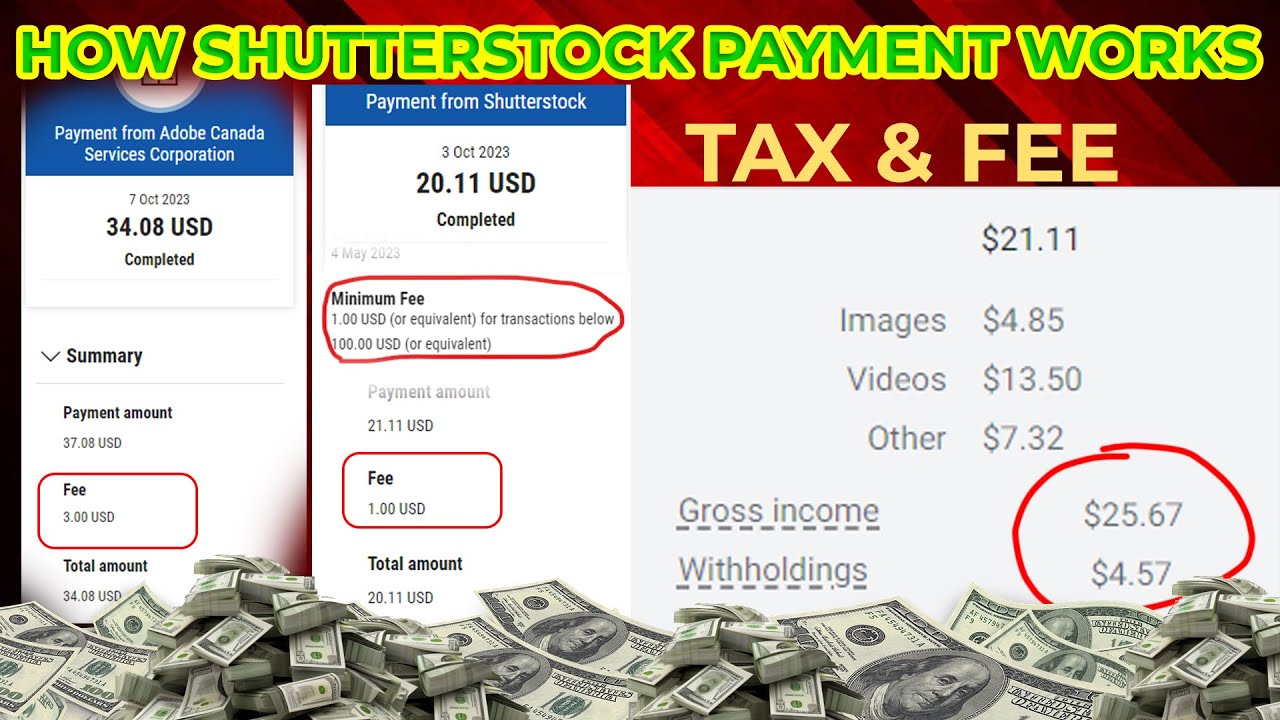If you’ve ever tried to find the perfect video clip for your project, you know how important it is to understand the pricing system behind Shutterstock’s video assets. Shutterstock uses a credit-based system to make licensing videos straightforward and flexible. Instead of paying a flat rate per video, you purchase credits upfront, which you then redeem to download or license video clips. This system can seem a bit confusing at first, but once you get the hang of it, it’s a handy way to manage your video needs without breaking the bank. In this post, we’ll explore what video credits are, how they work, and what influences their cost.
Factors Affecting the Number of Credits Required for Videos

When it comes to Shutterstock’s video credits, a lot of different factors can influence how many credits you’ll need for a particular clip. Understanding these can help you plan your budget better and choose the right videos for your projects. Let’s break down some of the main factors:
- Video Resolution and Quality: Higher resolution videos, like 4K or HD, generally cost more credits than standard definition clips. This is because higher quality videos require more storage and bandwidth, and they’re often in higher demand.
- Video Duration: The length of the video clip plays a big role. Short clips, like under 10 seconds, typically cost fewer credits, while longer videos can require more. Some pricing structures are based on the duration, so a 30-second clip might cost more than a 5-second one.
- Licensing Type: Shutterstock offers different licensing options, such as Standard and Enhanced licenses. Standard licenses are usually less expensive and require fewer credits, suitable for most projects. If you need extended rights or exclusive use, an Enhanced license might be necessary, which could affect the credit count.
- Usage and Distribution: The scope of your use — whether it’s for online ads, TV broadcasts, or large-scale distribution — can influence the licensing cost and, consequently, the number of credits needed. Larger or more widespread use often demands higher licensing tiers.
- Video Category and Popularity: Some categories or trending topics might be more in demand, impacting their price. Unique or niche content could either be more expensive or less, depending on availability.
In essence, the number of credits you’ll need varies based on these factors, and understanding them helps you make smarter choices. Always check the specific licensing details for each video before purchasing, so you’re fully aware of what your credits will cover. By considering these elements, you can better estimate your costs and ensure you’re getting the best value for your investment in Shutterstock’s video library.
How to Purchase and Use Video Credits on Shutterstock

Getting started with video credits on Shutterstock is pretty straightforward, but knowing the ins and outs can help you make the most of your investment. First, you’ll need to create an account if you haven’t already. Once you’re logged in, head over to the pricing page where you’ll see options to buy video credits or subscribe to a plan, depending on your needs.
Purchasing Video Credits:
You can buy video credits in various bundles, which usually range from small packs like 5 credits to larger sets such as 50 or 100 credits. The more credits you buy upfront, the better the per-credit value — a little tip to keep in mind if you plan to download lots of videos.
| Credit Pack | Number of Credits | Price | Cost per Credit |
|---|---|---|---|
| Small Pack | 5 | $49 | $9.80 |
| Medium Pack | 20 | $149 | $7.45 |
| Large Pack | 50 | $349 | $6.98 |
| Extra Large Pack | 100 | $599 | $5.99 |
Using Your Credits:
Once you’ve purchased credits, downloading videos is simple. When you find a video you like, click the download button, and Shutterstock will automatically deduct the appropriate number of credits based on the video resolution and licensing type. Typically, standard-definition videos cost fewer credits than high-definition or 4K videos.
Important: Always double-check the number of credits needed before confirming a download. If you run out of credits, you’ll need to purchase more to continue downloading. Also, keep in mind that credits are non-refundable, so make sure you’re choosing the right videos for your project.
Tips for Managing Your Video Credit Balance Effectively

Managing your video credits wisely can save you money and ensure you always have enough for the content you need. Here are some practical tips:
- Plan Your Downloads: Before diving into downloads, make a list of the videos you need. This way, you avoid unnecessary purchases or accidental overspending.
- Use Filters and Preview Options: Shutterstock offers filters and preview options to help you find exactly what you’re looking for. Take advantage of these to prevent downloading videos that aren’t perfect for your project.
- Prioritize High-Quality Content: While lower-resolution videos cost fewer credits, investing in higher-quality videos can be more cost-effective in the long run, especially if you’ll be using the footage in larger formats or for professional projects.
- Track Your Credits: Keep a record of your credit purchases and usage. Some users create a simple spreadsheet to monitor how many credits they have left and plan their future purchases accordingly.
- Combine Downloads: If you’re working on multiple projects, try to batch your downloads when possible. This helps you maximize the value of each credit pack and reduces the frequency of purchases.
- Stay Updated on Promotions: Shutterstock occasionally offers discounts or special deals on credit packs. Signing up for their newsletter or checking their promotions page can help you snag some extra savings.
By staying organized and strategic with your credit management, you’ll ensure that you get the most value out of your Shutterstock subscription or credit packs, making your video projects smoother and more budget-friendly.
Frequently Asked Questions About Shutterstock Video Credits
Thinking about diving into Shutterstock’s video library but feeling a bit overwhelmed by how their credit system works? You’re not alone! Let’s clear up some common questions so you can make confident decisions about purchasing and using video credits.
Q: What exactly are Shutterstock video credits?
Video credits are a form of digital currency that you purchase upfront and then redeem each time you download a video. Instead of paying per video, you buy credits in bulk, which can be more cost-effective if you plan to download multiple clips. Each video has a specific credit cost depending on its resolution and licensing type.
Q: How many credits do I need to download a video?
The number of credits required varies based on factors like video resolution and licensing. For example:
- Standard License: Usually between 1-3 credits
- Premium License: May require 4 or more credits
Always check the specific video’s credit requirement before downloading.
Q: Can I buy credits in different packages?
Yes! Shutterstock offers a variety of credit packages, from small bundles suitable for occasional users to larger packs for frequent downloaders. Typically, larger packages offer a better rate per credit, so if you anticipate lots of downloads, buying in bulk can save you money.
Q: Do credits expire?
This is an important question! Generally, Shutterstock credits do have an expiration date, often around 12 months from the date of purchase. Be sure to check the details of your specific account, and plan your downloads accordingly to avoid losing unused credits.
Q: Can I use my credits for other types of media besides videos?
Yes! Credits on Shutterstock can often be used for images, music tracks, and videos—depending on your account and licensing options. Just verify the specific credit requirements for each media type before making a purchase.
Q: What happens if I don’t use all my credits?
If you have leftover credits after a certain period, they typically remain in your account until they expire. Some users choose to stagger their purchases or plan their downloads to maximize the value of their credits. Remember, unused credits can be a little wasteful if you don’t keep track of their expiration dates.
Conclusion and Final Tips for Budgeting Your Video Purchases
Understanding how Shutterstock’s video credits work is a big step toward managing your budget effectively. Here’s a quick recap and some final tips to help you get the most bang for your buck:
- Plan ahead: Identify which videos you need and estimate how many credits they’ll cost. This helps avoid overspending or ending up with unused credits.
- Buy in bulk: Larger credit packages often come with discounts, making them a smarter investment if you’re a frequent user.
- Watch expiration dates: Keep track of when your credits expire to ensure you use them before they’re gone.
- Compare licensing options: Standard licenses are usually enough for most projects, but if you need extended rights, be prepared for higher credit costs.
- Mix and match media: Use credits across images, videos, and music to diversify your content without extra costs.
Finally, always review your project’s scope and budget before purchasing credits. By doing so, you’ll avoid unnecessary costs and ensure your creative needs are met without breaking the bank. Happy creating!


